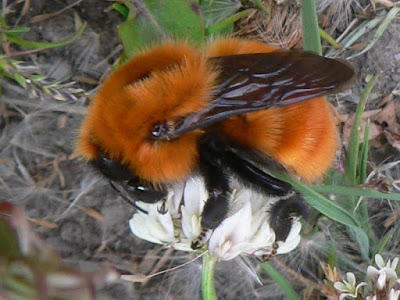Pisagua is now a fishing village of only a couple of hundred people on the Atacama Desert coast of northern Chile. Only a century ago however it was one Chile's great ports, hosting internationally famed opera singers; more recently it has been, on three separate occasions, a terrible concentration camp for opponents and victims of extreme right-wing military-style governments.
 |
| Pisagua huddled against the desert coast, from Punto Pichalo, north of the town. The waterless tracts hemming it in made it an ideal prison site. |
 |
| The road to Pisagua from the east, with the camanchaca - the sea mist produced by the cold onshore Humboldt Current - dominating the skyline. |
Pisagua was founded back in the early 17th century as a port associated with major silver mines in Bolivia, but boomed in the 19th century with the rise of the guano-mining industry, when centuries of droppings from vast seabird colonies on the coasts of Chile and Peru were mined and exported as fertiliser.
 |
| Guano (from cormorants, boobies, pelicans and terns) on an island off Pisagua. |
At this stage Pisagua was in Peru; south of here Bolivia stretched to the sea, with Chile further south again (north to approximately Antofagasta on the map above). After the War of the Pacific, one of the great conflicts of the latter 19th century, in which Chile defeated both of its northern neighbours, Bolivia lost its sea access in 1884 and Chile moved its northern border some 500km further north, well into Peru. Pisagua became, and remains, Chilean.
At around this time Pisagua had become much more significant as the port for the new nitrate-mining industry, exporting vast quantities of nitrate from mines in the desert to the fertiliser and explosives industries of North America and Europe. Indeed, by the beginning of the 20th century it was, with Iquique and Valparaiso, one of the three great ports of Chile. With banks, schools, telegraph offices and railways, and the magnificent Teatro Municipal on the waterfront, its population of nearly 10,000 lived well. Steamships brought fresh food and flowers twice a week. Its decline began with the end of the nitrate boom in the 1920s, and its glory turned very grim as a series of brutal presidents used it as a remote prison camp. In the late 1920s Carlos Ibáñez del Campo dumped gay men there; around 1950 Gabriel Gonzalez Videla did the same with communists; and much more recently the infamous General Pinochet sent very many leftist opponents there. Many of those sent there died or simply vanished.
Today most of the town's buildings, including the theatre, are empty and the attraction is mostly in the abundant wildlife. One 'must-do' activity is the two kilometre walk along a narrow road above the sea, to Punta Pichalo to the north of the town.
 |
| The track to the point; the total lack of vegetation is typical of much of the Atacama. The effective rainfall for Pisagua is - zero... |
The cold Humboldt Current, bringing nutrients up from the ocean depths, is one of the richest parts of the planet, and the world's most productive marine ecosytem. It produces some 20% of the global fish catch (by humans) and the bird and other animal life abounds.
 |
| Peruvian Pelicans Pelecanus thagus, above and below. Formerly considered a sub-species of Brown Pelican, it is now recognised as a full species, extending south from northern Peru. |
 |
| South American Sea Lions Otaria flavescens on an islet off Punta Pichalo. The only member of their genus, they are not closely related to other sea lions. |
 |
| South American Sea Lions and Inca Terns Larosterna inca. Inca Terns (below) also comprise a single-species genus, as well as being arguably the most beautiful term in the world. |
 |
| With all the activity it was inevitable that there would be dolphins around and a small pod of Bottlenose Dolphins Tursiops truncatus swam past the point. |
 |
| Turkey Vultures Cathartes aura constantly patrol the shoreline and sea lion colonies. |
However the highlight was an extraordinary conversion of pelicans and cormorants (Guanay and Red-legged) on what must have been a huge school of small fish that moved past the point and out to sea, attracting thousands of birds, and presumably large predatory fish and dolphins too.
 |
| The number of small fish to attract this number of birds - and there was a constant stream of cormorants and pelicans leaving the land to join the feast - must have been in the millions. |
Humans have been sharing in this wealth for a long time too, judging by the huge midden on the point.
 |
| Shell midden with charcoal, evidence of many cooked meals. |
Back in town there is a nice waterfront park with shelters, ideal for lunch - and further wildlife watching.
 |
| Neotropical Cormorants Phalacrocorax brasilianus are found throughout South America and north to the southern US. |
 |
| Peruvian Pelicans loaf about the port scrounging for scraps. |
 |
| Band-tailed (or Belcher's) Gull Larus belcheri is readily distinguished from the more widespread Kelp Gull L. dominicanus by the eponymous black tail band. |
 |
| Blackish Oystercatcher Haematopus ater; its elegant white legs are highly distinctive. A pair patrols the rocks in front of the picnic shelters. |
And while not many passerines make the seafront their home, one species here does and is rarely found away from the waves.
Pisagua is not on the main tourist trails of Chile, but that's no reason not to go there - one might indeed argue the opposite. Its recent past was grim, but we should not forget that such barbarism exists.
And for a naturalist, Pisagua has abundant rewards.
BACK ON TUESDAY






























